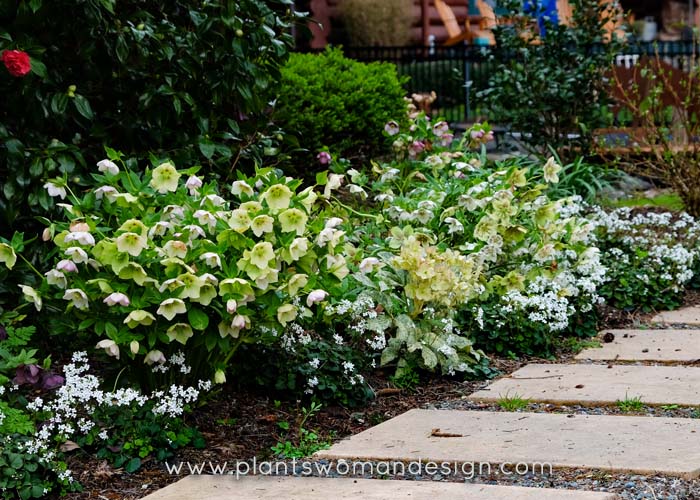Spring borders are always a little challenging. Some plants are stubborn and refuse to bloom at the same time every year. Other plants are just emerging and are not partial to competition (I took out Galium Oderatum for that very reason). Planning the spring border is one of the most important things to plan. You want to be sure to plant things that are amazing in the spring but not leave a big blank space for the rest of the year. We have all seen a huge swath of spring bulbs in a garden that looks great for a couple of weeks but then becomes dying foliage, then blank space. If you go to the nursery in the spring you will only find things that are blooming at that time. The sales factor in the nursery is bloom. With planning, you can buy things that are either not in bloom or will be in the nursery later in the year. The border should have
I enjoy plants that are bright and stand out in our gray days. This one has bright red/pink in the background that gradually turns purple as the season progresses. Remember that variegated foliage can add to the color combination as well as blooms.
If you have an area you want to renovate and create a more cohesive design, start by removing plants that won’t fit into the plan. Be ruthless and move the ones you love to other areas of the garden, and get rid of ones that no longer appeal, or are invasive. Starting from scratch is really a fun project. Divide the area into layers and plan to have larger plants in the back as a background if it is an edge bed. If it is an island bed the larger plants go in the middle and graduate levels of plants down. I plan the bed to be amazing in the spring and more muted later in the year. If you only put ½ of the plants as spring plants then the rest of the plants that bloom at different times it is more of a mixed border, not a spring border.
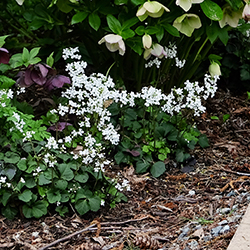
Cardamine Trifolia
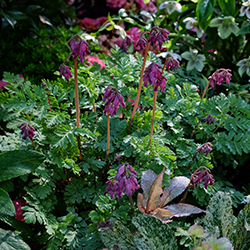
Bleeding Heart
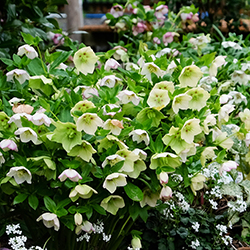
Hellebore ‘Pacific Frost’
The front of the border is one of my favorite ground covers Cardamine
The Galanthus are finished blooming and only the green/blue strappy foliage is left. A white epimedium is throwing airy white blooms and purple new foliage to cover the dying foliage of the Galanthus. Mixing a couple of different types of hellebores add to the drama of white both in bloom and in foliage. The hellebores are a great variegated leaf ‘Pacific Frost’ the green and white look great even later in the year after the flowering has stopped. A double white hellebore ‘Florence Picotee’ is at the back and single white hellebore (probably a mardi-gras mix) in the center, and behind is an amazing green one called ‘Jade Star’. Many of my hellebores are from Northwest Garden Nursery in Eugene Oregon, for many years a producer of fabulous cultivars of Helleborus.
As this planting evolves in later spring the purple/red starts coming on. The bleeding heart (dicentra bacchanal) with dark purple-red blooms, the new foliage on the ‘Pacific Frost’ hellebore is blushed with purple, and the new leaves of the epimedium also are a muted purple.
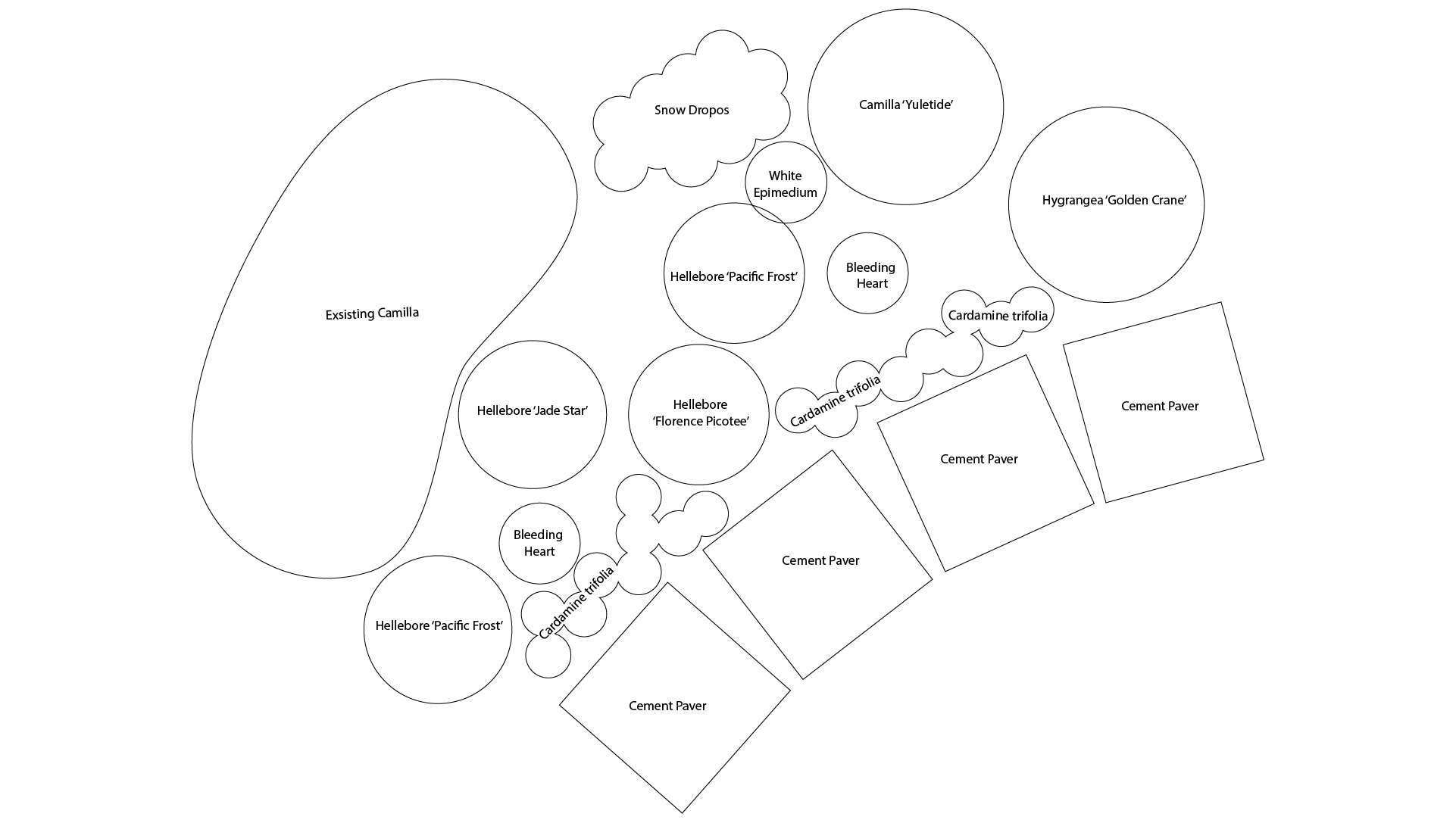
In this border, the background is a large red/pink camellia in the garden when I purchased the house blooming a little ahead of time. There is also a Hydrangea ‘Golden Crane’ that will bloom later in the year in the background. A camellia ‘yuletide’ is finished blooming near the ‘Golden Crane’. The camellias serve as background for the rest of the bed. As spring turns into summer the greens take over, the variegated leaves are beautiful and the
So pick your color combinations then start at the bottom layer with ground cover that is in the main color, right placement (Sun or shade), and same bloom time as the rest of the bed will bloom. The second layer is next with accent color at about 50%, and the rest in the main color with the same bloom time and placement. The final top layer would be more of the main color and accent color at about 20%. Remember to try some fun textures (grassy, glossy leaf, variegated) mixed in and think about what it will look like in 3 months, and 6 months. Early summer and late summer plants can be added to continue the bloom (lightly) but it is important to remember that a full spring border cannot be a full summer and full fall border. Other beds can be planted in other areas of the garden that will bloom at different times.
Hope that this is helpful. If you have questions email me and I can possibly help.

